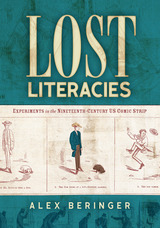29 have author last names that start with J have author last names that start with J
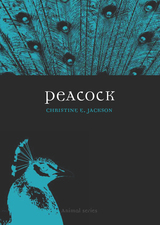
The bird itself, as Christine E. Jackson notes in Peacock, appears to enjoy its audience, preening and strutting about within a few feet of humans. It is not surprising, then, that these vain birds and their distinctive feathers have been the prized possessions of kings for nearly three thousand years. Jackson here explores the peacock’s beauty—and its apparent attitude—through fairy tales, fables, and superstitions in both Eastern and Western cultures. Peacock takes stock of the bird as it appears within art, from the earliest mosaics to medieval illuminated manuscripts to modern graphics, with a special emphasis on the peacock’s symbolic value in the nineteenth-century arts and crafts and art nouveau movements. Jackson further details the peacock’s colorful presence in hats, clothing, and even sports equipment.
A sweeping combination of social and natural history, Peacock is the first book to bring together all the shimmering, colorful facets of these magnificent birds.
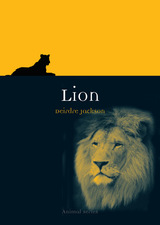
Although the lion is not the largest, fastest or most lethal animal, its position as king of beasts has rarely been challenged. Since Palaeolithic times, lions have fascinated people, and due to its gallant mane, knowing eyes, and distinctive roar, the animal continues to beguile us today. In Lion, Deirdre Jackson paints a fresh portrait of this regal beast, drawing on folktales, the latest scientific research, and even lion-tamers’ memoirs, as well as other little-known sources to tell the story of lions famous and anonymous, familiar and surprising.
Majestic, noble, brave—the lion is an animal that has occupied a great place in the human imagination, inspiring countless myths, lore and legends. As well, this creative relationship has abounded in visual culture—painted on wood and canvas, chiseled in stone, hammered in metal, and tucked between the pages of medieval manuscripts, lions have often represented divinity, dignity, and danger.
In Lion Jackson summarizes the latest findings of field biologists and offers in-depth analyses of works of art, literature, oral traditions, plays, and films. She is a peerless guide on a memorable visual and cultural safari.
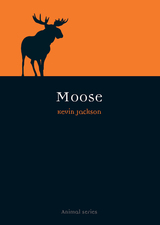
Moose explains moose’s biological history and describes its natural environments around the world, including Canada, New England, Alaska, and Scandinavia, where the moose is the national animal of Sweden and Norway. Jackson considers why the moose is really an elk and an elk is a wapiti, and he also looks at the controversy behind the naming of the Irish Elk. Moose explores the animal’s role in human history since the Stone Age, including the “alces” in Julius Caesar’s history of the Gallic Wars and its influence on figures such as poet Ted Hughes and Theodore Roosevelt and his Bull Moose Party. The Rocky and Bullwinkle Show, a 150-foot statue being built in Sweden, and colorful moose lore all appear in this wide-ranging study, making this an essential read for naturalists and moose lovers alike.

Jacksoninvestigates how the allergy became the archetypal “disease of civilization,” as it transformed from a fringe malady of the wealthy into one of the greatest medical disorders of the twentieth century. Jackson also examines the social and economic impact of the allergy, as it catalyzed a new health-conscious culture and created the wealth of some of the largest companies in the world today. Whether cats, crabgrass, or cheese is the source of your daily misery, Jackson’s engaging and in-depth account is an invaluable addition to every bookshelf.

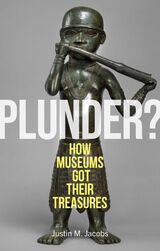
In this thought-provoking new work, historian Justin M. Jacobs challenges the widely accepted belief that much of Western museums’ treasures were acquired by imperialist plunder and theft. The account reexamines the allegedly immoral provenance of Western collections, advocating for a nuanced understanding of how artifacts reached Western shores. Jacobs examines the perspectives of Chinese, Egyptian, and other participants in the global antiquities trade over the past two and a half centuries, revealing that Western collectors were often willingly embraced by locals. This collaborative dynamic, largely ignored by contemporary museum critics, unfolds a narrative of hope and promise for a brighter, more equitable future—a compelling reassessment of one of the institutional pillars of the Enlightenment.

Recounting the lively history of the city, Jaivin discovers the Peking Man and the capital’s many legendary incarnations, such as the Cambaluc that Marco Polo wrote about in awe. She reveals it to be full of charismatic personalities and dramatic events, a place that has produced some of China’s most iconic works of literature, theater, and music. She also offers thought-provoking essays on contemporary topics ranging from the elemental problems of air and water to the vibrant art scene and the architectural adventurism of the city’s “hyperbuildings.” Generously illustrated, this guide provides helpful maps and suggested itineraries as well as practical recommendations for hotels, restaurants, museums, and other sites.
Taking readers to lakeshores, down into the subway, and around the bustling art districts, Beijing is the ultimate introduction to this extraordinary city for travelers and armchair explorers alike.

Faith and Sword opens with the tumultuous first centuries of the conflict, examining the religious precepts that framed clashes between Christians and Muslims and that ultimately fueled the legendary Crusades. Traversing the full breadth of the Arab lands and Christendom, Jamieson chronicles the turbulent saga from the Arab conquests of the seventh century to the rise of the powerful Ottoman Empire and its fall at the end of World War I. Faith and Sword then explores the complex dynamics that emerged later in the twentieth century, as Christendom was transformed into the secular West and Islamic nations overthrew European colonialism to establish governments straddling modernity and religiosity.
From the 1979 Iranian revolution to the Lebanon hostage crisis to the present-day war in Iraq, Faith and Sword reveals the essence of this enduring struggle and its consequences.

Faith and Sword opens with the tumultuous first centuries of the conflict, examining the religious precepts that framed clashes between Christians and Muslims and that ultimately fueled the legendary Crusades. Traversing the full breadth of the Arab lands and Christendom, Jamieson chronicles the turbulent saga from the Arab conquests of the seventh century to the rise of the powerful Ottoman Empire and its fall at the end of World War I. He then explores the complex dynamics that emerged later in the twentieth century, as Christendom was transformed into the secular West and Islamic nations overthrew European colonialism to establish governments straddling modernity and religiosity.
From the 1979 Iranian revolution to the Lebanon hostage crisis to—in this new expanded edition—the recent wars in Syria, Iraq, and Afghanistan, Faith and Sword reveals the essence of this enduring struggle and its consequences.
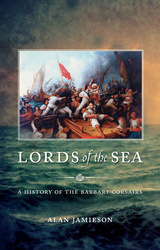
The escalation of piracy in the waters east and south of Somalia has led commentators to call the area the new Barbary, but the Somali pirates cannot compare to the three hundred years of terror supplied by the Barbary corsairs in the Mediterranean and beyond. From 1500 to 1800, Muslim pirates from the Barbary Coast of North Africa captured and enslaved more than a million Christians.

Out of the Depths explores all aspects of shipwrecks across four thousand years, examining their historical context and significance, showing how shipwrecks can be time capsules, and shedding new light on long-departed societies and civilizations. Alan G. Jamieson not only informs readers of the technological developments over the last sixty years that have made the true appreciation of shipwrecks possible, but he also covers shipwrecks in culture and maritime archaeology, their appeal to treasure hunters, and their environmental impacts. Although shipwrecks have become less common in recent decades, their implications have become more wide-ranging: since the 1960s, foundering supertankers have caused massive environmental disasters, and in 2021, the blocking of the Suez Canal by the giant container ship Ever Given had a serious effect on global trade.

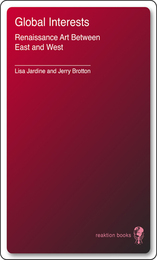
Global Interests offers a timely reconsideration of the development of European imperialism, focusing on the Habsburg Empire of Charles V. Lisa Jardine and Jerry Brotton analyze the impact this history continues to have on contemporary perceptions of European culture and ethnic identity. They also investigate the ways in which European culture came to define itself culturally and aesthetically during the century-long span of 1450 to 1550. Ultimately, their study offers a radical and wide-ranging reassessment of Renaissance art.

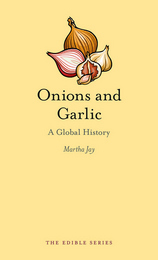
Going back to the earliest recipes from ancient Mesopotamia, Jay traces the spread of alliums along trade routes through Central Asia and into ancient Greece and Rome. Likewise she follows their spread in East Asia, where they have become indispensable, and of course into Europe and the Americas, where the onion—and its odor—gave rise to the name “Chicago” and the leek became the national symbol of Wales. Celebrated, denigrated, prescribed, and proscribed, onions, garlic, and their relatives can be found—as Jay lavishly demonstrates—in the histories of peasants and kings, in cuisine and art, in tales of colonization and those of resistance, and in medicinal cures and magical potions alike. Her book is a welcome celebration of some of the most important ingredients in the world.

For this book, fifteen distinguished historians were given a deceptively simple task: identify their choice for the worst military leader in history and then explain why theirs is the worst.
From the clueless Conrad von Hötzendorf and George A. Custer to the criminal Baron Roman F. von Ungern-Sternberg and the bungling Garnet Wolseley, this book presents a rogues’ gallery of military incompetents. Rather than merely rehashing biographical details, the contributors take an original and unconventional look at military leadership in a way that appeals to both specialists and general readers alike.
While there are plenty of books that analyze the keys to success, The Worst Military Leaders in History offers lessons of failure to avoid. In other words, this book is a “how-not-to” guide to leadership.
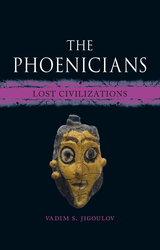
The Phoenicians is a fascinating exploration of this much-mythologized people: their history, artistic heritage, and the scope of their maritime and colonizing activities in the Mediterranean. Two aspects of the book stand out from other studies of Phoenician history: the source-focused approach and the attention paid to the various ways that biases—ancient and modern—have contributed to widespread misconceptions about who the Phoenicians really were. The book describes and analyzes various artifacts (epigraphic, numismatic, and material remains) and considers how historians have derived information about a people with little surviving literature. This analysis includes a critical look at the primary texts (classical, Near Eastern, and biblical), the relationship between the Phoenician and Punic worlds; Phoenician interaction with the Greeks and others; and the repurposing of Phoenician heritage in modernity. Detailed and engrossing, The Phoenicians casts new light on this most enigmatic of civilizations.
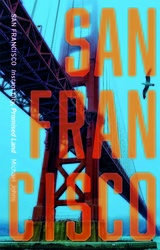
Johns explores how, despite its sophistication, San Francisco retains a frontier quality that has always attracted seekers—of fortune, power, pleasure, refuge, rebellion. Yet the city is more than irreverent, independent, and a bit outside the law: it’s also historically progressive, technologically innovative, and open to all kinds of people and ideas. As Johns shows us, San Francisco is an easy place to be different—a home to the Beats and the hippies, a vibrant LGBT community and left-wing politics, the rise of Burning Man, and the creation of technologies that make today’s San Francisco the City of Apps. From Haight-Ashbury to the Tenderloin, Chinatown to the Mission, Johns’s urban journey blends historical narrative, personal reflections on the city today, and a treasure trove of images for a true San Francisco treat.

Johnson examines the problems that have plagued the region, including civil wars in Afghanistan and Tajikistan and burgeoning Islamist terrorist movements in several nations. He explains the complex role played by narcotics, ethnic tensions, and the potential wealth from oil and gas reserves in the region’s political maneuverings, and delineates the complex links between civil violence and the policies of Central Asian governments on such crucial issues as human rights, economic development and energy.
A timely investigation, Oil, Islam and Conflict will be required reading for all those invested in the threat of terrorism and the future of energy security.
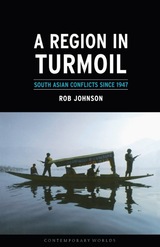
A Region in Turmoil offers a new perspective on the area, drawing together the conflicts of South Asia and examining them in local and global contexts, from the end of the Western colonial empires through today's global efforts to combat terrorism. Johnson's incisive analysis breaks down the historical and political roots of the conflicts and departs from traditional Western-centric paradigms to reveal heretofore overlooked South Asian viewpoints on the conflicts and connections among the wars. He probes the causes, contexts, and conclusions of the conflicts, ranging from the enduring insurgency in Myanmar to the struggle of the Tamil Tigers in Sri Lanka, the unrest in the Punjab and Assam states, the Bangladeshi war of independence, and the intractable struggles in Kashmir and Afghanistan.
The twenty-first century opened with South Asia front and center on a turbulent political stage: the region is not only the designated frontline for the "war on terror" but also home to the newest nuclear powers, India and Pakistan. A Region in Turmoil addresses this critical contemporary crisis with an invaluable analysis of the region and its complex history, making it essential reading for historians, policymakers, and anyone who reads the front page of the daily newspaper.

The book traces corn back to its Mesoamerican roots, following along as it was transported to the Old World by Christopher Columbus, and then subsequently distributed throughout Europe, Africa, and Asia. Jones takes readers into the deliciously disparate culinary uses of corn, including the Chilean savory pie pastel de choclo, Japanese corn soup, Mexican tamales, a Filipino shaved ice snack, and the South African cracked hominy dish umngqusho, favored by Nelson Mandela. Covering corn’s controversies, celebrations, and iconic cultural status, Jones interweaves food, folklore, history, and popular culture to reveal the vibrant story of a world staple.

Bug zappers were invented for one purpose: to kill mosquitoes, the bane of many summer evenings, camping trips, and exotic vacations. These blood-sucking insects do more than leave us with itchy bites, though. The diseases they carry and inject, such as yellow fever, dengue fever, and the West Nile virus, make them responsible for more human deaths than any other animal. The most deadly of these, malaria, has been mostly eradicated from the northern hemisphere, but it continues to pose a mortal threat in developing countries. It kills nearly 700,000 of the 350 million that succumb to the infection each year, and the majority of the deaths occur in sub-Saharan Africa.

Leading entomologist Richard Jones redresses the balance in this enlightening and entertaining guide to the natural and cultural history of these powerful arthropod carnivores. Jones delves into their complex nesting and colony behavior, their fascinating caste system, and their major role at the center of many food webs. Drawing on up-to-date scientific concepts and featuring many striking color illustrations, Jones pushes past the sting, showing exactly why wasps are worthy of greater understanding and appreciation.


Ludmilla Jordanova's lucid text reflects on the nature of the relationship between art, science, medicine and technology by focusing on a selection of portraits that spans more than three centuries. Illustrated with likenesses of such notable personalities as Edward Jenner, Marie Curie, Charles Darwin, Albert Einstein and Dorothy Hodgkin, and encompassing a variety of media from paintings and medals to bookmarks and key rings, Defining Features charts changing attitudes towards medical practice and scientific investigation, as well as exploring how notions of gender, heroism, popularization and celebrity have affected the public's understanding of how researchers do their work.
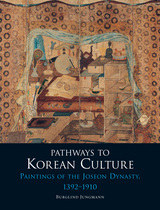
In addition to discussing the more well-known ink paintings of the literati elite, Jungmann investigates the role of women as artists and patrons, the use of the ideals of Chinese antiquity for political purposes, and the role of painting in foreign exchange and as a means of escapism. She also explores the support of Buddhist products in a society governed by Confucian ideology and court projects done to document important events and decorate palaces. Jungmann unwraps the layers of personal, intellectual, aesthetic, religious, socio-political, and economic contexts within which these paintings are embedded, casting new light on the conditions of this period. Tying in with exhibitions at the Los Angeles County Museum of Art in June, 2014 and the Museum of Fine Arts, Houston in November, 2015, Pathways to Korean Culture fills an immense gap in the literature on this period of Korean art.
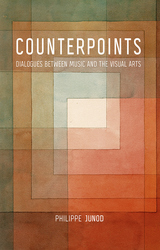
The book’s main focus is music and its relationship with painting, sculpture, and architecture. Philippe Junod draws on theoretical and practical examples to show how different art movements throughout history have embraced or rejected creative combinations. He explains how the Renaissance, neoclassicism, and certain brands of modernism tried to claim the purity of each mode of expression, while other movements such as romanticism, symbolism, and surrealism called for a fusion of the arts. Counterpoints is a unique cultural history, one that provides a critical understanding of a popular but previously unheralded art form.

From the iconic European badger and its North American kin to the African honey badger and Southeast Asian hog badger, Justice considers the badger’s evolution and widespread distribution alongside its current, often-imperiled status throughout the world. He travels from natural history and life in the wild to the folklore, legends, and spiritual beliefs that badgers continue to inspire, while also exploring their representation and exploitation in industry, religion, and the arts. Tracing the complex and contradictory ways in which this fascinating animal endures, Badger will appeal to anyone interested in a deeper understanding of these much-maligned creatures.
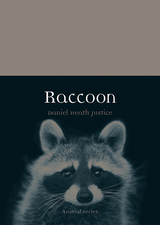
READERS
Browse our collection.
PUBLISHERS
See BiblioVault's publisher services.
STUDENT SERVICES
Files for college accessibility offices.
UChicago Accessibility Resources
home | accessibility | search | about | contact us
BiblioVault ® 2001 - 2024
The University of Chicago Press






